Tokyo’s Artist Run Spaces Part 2: Roji to Hito
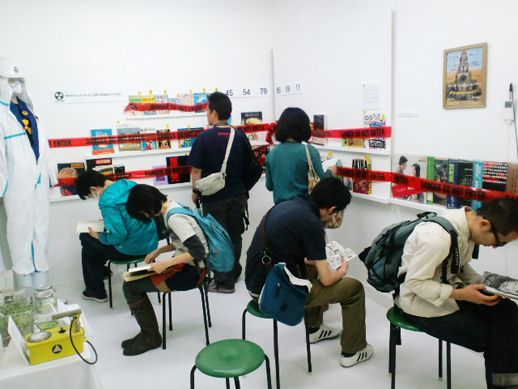
Tokyo Art Beat spoke with co-founding member of Roji to Hito, Junko Harada (illustrator), to find out more about the appeal of this small second-floor space based in Suidobashi, led alongside Yuuko Kikukawa (ceramicist), Shinichi Asai (photographer), Izumi Tsurusaki (artist) and Namiko Kuze (illustrator).
Formerly tucked away just behind the main street of Jimbocho’s book lined district, Roji to Hito has recently made a not too distant move to the sidestreets of Suidobashi, where a small unassuming sign points to the presence of a compact art space (about 6 tatami mats) operating as many things to different people. In fact it seems inadequate to define it under the term of “artist run space”, as it is a constant shape shifter, with multiple faces, clearly reflecting the wide range of backgrounds and interests of its members and the uniquely open, democratic process through which it is managed.
Founded in 2010 by 5 members who had never even met each other before Roji to Hito was certainly a leap of faith but grounded solidly on the foundations of Herio Kotomizu. Junko Harada, the only remaining original member of the group, has seen many changes over the last 5 years but forcefully asserts the position of Roji to Hito as very much “alternative”. When questioned over the debate surrounding this term Harada stresses that alternative is not a case of “B” only being able to exist in opposition to “A”, and it does not always have to defined as something “anti” or “against” but rather it is a sub-culture existing in parallel to the mainstream. For Harada herself counter-culture is at her heart, being brought up on demonstrations and direct action and highly involved with current protest movements against nuclear energy, racial discrimination, government endorsed censorship and moves towards “collective self defense”. Yet Roji to Hito itself does not take such an overt political stance. It is rather a space in which everyone brings something to the table and through the digestion of what is on offer are able to find their own position in the world. “I am certainly not going to tell you what Roji to Hito is… that is up to you!” exclaims Harada as she stresses that the space is about choice and encounter, offering a pedestal for numerous forms of being.
The original space in Jimbocho was a completely white room with quaint fixings which revealing its age, and the newly relocated space in Suidobashi is of a similar style and era but its retro brown paneling which gives it a certain emphasized sense of time. In either case, Roji to Hito is a space for projection. The members refrain from imposing their own personality, interest and preferences in creating any particular sense of décor, it is rather left to be as neutral as possible so that the visitor themselves may take hold of its possibilities and “occupy” it with their own imagination. And it is this space, this blank which calls people to Roji to Hito and compels them to make it their own. “There are too many stipulations, too many things already decided for you in Japan” explains Harada and this is why it is important to her and other members that a particular flexibility is maintained in their approach to the space which is defined by the position of the viewer.
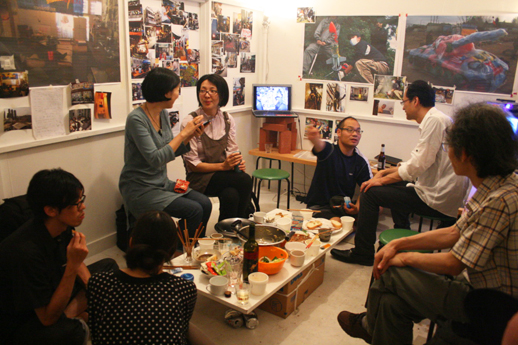
The very name of Roji to Hito presents its philosophy “Roji” meaning small side street and “Hito” meaning person/people, it suggests something impulsive, unregulated, improvised, like a street performance, a road-side flea market, or an ad hoc gathering of musicians. It’s something on a small individual scale that is both intimate and unpredictable, public but organic, taking over a space without permission. Roji to Hito was the brainchild of writer and editor Herio Kotomizu whose free arts publication “etc.” built up a niche of followers who welcomed his whole-heartedly non-hierarchal approach to the arts by placing a busking event alongside a major art museum exhibition on the pages of his free paper. And it was upon just such a concept that Roji to Hito was founded, creating a space which places all forms of expression upon the same level and constantly moves between the identities of art space, café, book store, cinema, performance and lecture space. A particular driving force for this multi-faceted identity has been to challenge notions of homogeneity, constructions of “unity” which obliterate innate difference, ultimately resulting in a form of totalitarianism, while simultaneously rejecting neo-liberal individualism. Siting the rise of racism in Japan Harada for one emphasizes the need to see things from another perspective and to come closer to something which is different through opening up a junction between numerous approaches, ideas and expressions. It is a matter of connecting things horizontally and not demanding that we all get on, but making us aware of the many diverse existences which surround us.
“This is what the internet supposedly promised us, it was to be the solution to these imposed hierarchies but clearly it failed in that and has allowed us to negate the presence of anything we are not interested in or do not wish to see,” says Harada. “That is why the concept of ‘etc.’ and in turn Roji to Hito is so important, to take the open space of the page or the room and allow things to co-exist there, where my small sketch could appear alongside the work of Yayoi Kusama for example, where it is not important if it is defined as ‘art’ or not but rather it provides the stage for individual creativity on a very flat scale.” At the same time this holistic approach which comes to encompass all forms and levels of expression connects for Harada very much to feminist activist Carol Hanisch’s proclamation that “the personal is political”, in which all aspects of life both express something and also embrace an unconscious political position in the food we eat, the clothes we wear, the shops we make our purchases in, each individual decision is extremely personal but when this comes together as a collective it forms the waves of society and therefore within this we must be made aware of the many ways of life, the many expressions available to us in order to attain a democracy.
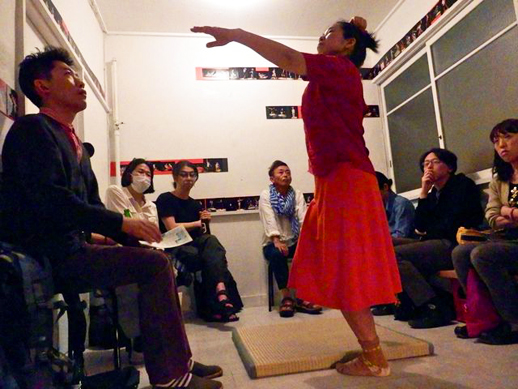
The “organization” behind this space is a completely decentralized collective which runs on democratic processes of discussion and collaboration. As there is no one single core focus for this group, communication between its members is vital, providing an important stepping stone towards communication with its audience, as each member must explain their idea and gain the understanding of the others before any event can be realized. As some of the members do not come from an art background they also offer a variety of perspective, as well as introducing new channels to other fields the relations of which organically develop into the program of Roji to Hito. Harada states it has been a real learning process, as having worked principally on her own in the production of her illustrations she has had to step into the role of curating, organizing, engaging in discussion in which one must constantly validate one’s decisions.
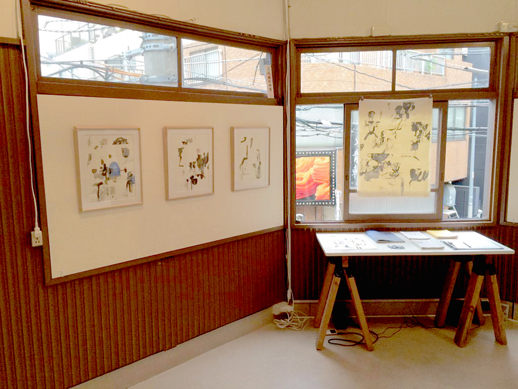
The artists and creatives who present at Roji to Hito are given as much free reign as possible over the space. “Generally we don’t say no to anything” Harada admits, but follows this again with the importance to explain and justify the intention behind the action, while also requiring each artist to take responsibility for those actions (although playing with fire, for example, and allowing the building next door to burn down is going a bit far, she concedes). As the space is completely independent there are a long list of limitations to the kind of support that can be offered to the artist. “We start of by reeling off all the things we can’t do. Once we have made that clear and the artist still once to work with us, then we accept them as a member who can activate the space in which ever way they choose.” In this way a close relationship is formed between the organizers and exhibiting creators in their autonomous approach to presenting something that they have made through their own will and strength.
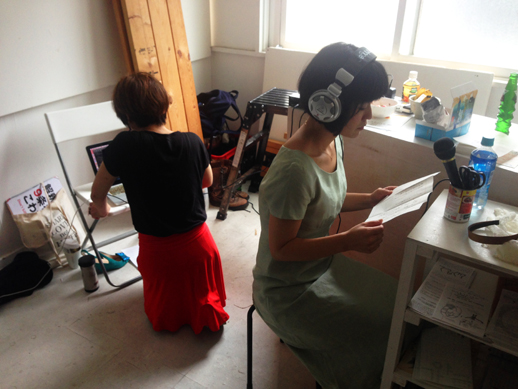
When asked about their position in relation to the art market Harada acknowledges that until recently the space has taken quite an aggressive non-profit stance, but has never discouraged artists from selling their works or taking an admission fee for themselves. With the suggestion that some feel that targeting the art market is the only way to gain recognition and achieve a wider impact, Harada responds that for her it is not about quantity. While the success of an initiative may be judged on its breadth of popularity, she would rather focus on the depth to which is understood and touches people’s lives. The members do however recognize that a certain income is required in order to maintain the sustainability of the space and have to admit that it is difficult to survive outside of established systems of economy. They also feel that the act of selling a work of art or taking an admission fee also places a certain responsibility upon the artist and organizers and in this way brings them to consider further the need for communication with their audience. Having said this Roji to Hito are not aiming towards riches, and talk of the market very much like a local street-side stall rather than a global financial system. They approach the market on a familiar personal scale which is accessible to all, a place of value exchange which may be witnessed by the transfer of 1000 yen, 10,000 yen based upon audience, artist and organizers personal economy. In this way a small alternative market make connect with one after another to form a new group of markets which may have a greater market force.
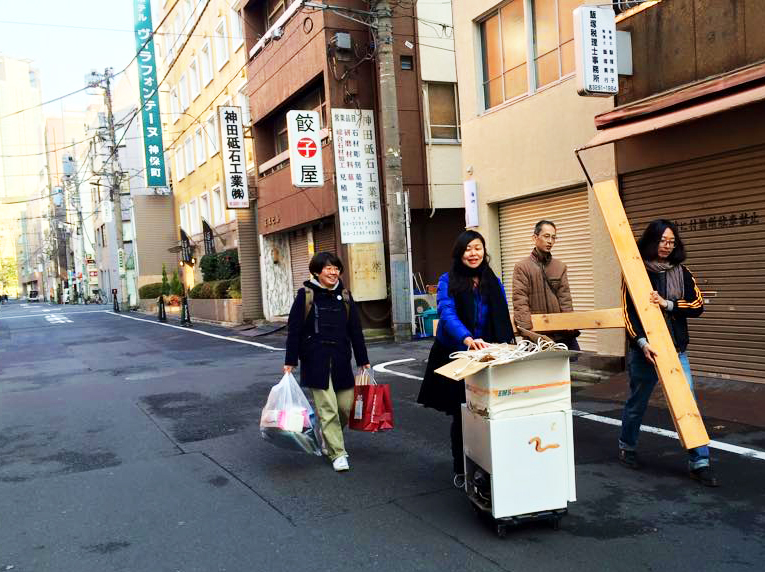
As with so many art organizations, collectives and artists, the events of March 11 2011 (3/11) had a profound affect on Roji to Hito’s members, and the repercussions of this have sounded through the structure of the collective with some members deciding to take a new direction when faced with such challenges, the challenge to all they had taken for granted up until this point. Some members felt compelled to return to their home towns and engage in a deeper level of community from a grass roots level and counter certain mainstream currents which have been promoted through art itself too. For example one member hailing from the Setouchi district returned to Teshima, a site over the years occupied by Benesse and the Setouchi International Festival, and has since developed her own project as an original citizen of the region, working to voice the expressions, customs and creativity of local people rather than those imposed from the outside. Perhaps it could be said that the events of 3/11 brought a renewed sense of personal agency and the need to structures enforced by other authorities, instead creating a small scale but slowly expanding network from the bottom up.
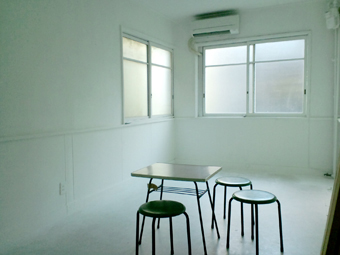
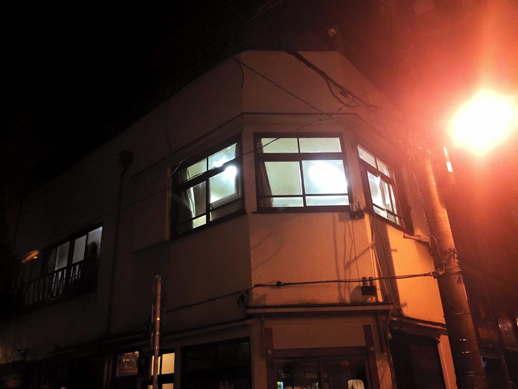
At the same time Harada recognizes the importance of remaining in the city, trying to do something that is perhaps impossible in such cold urban environment. It might be met with much more success in the countryside, but there is meaning in taking on that impossible challenge in the city instead. While relations in the immediate vicinity make up one form of community, Roji to Hito rather than being preoccupied by the definitions placed by locality in fact place greater weight upon a distributed network of supporters, collaborators and interested parties, with particularly strong dialogue with other “alternative”, “counter-culture” spaces such as IRA(Irregular Rhythm Asylum), Shiroto no Ran and Pool. Roji to Hito will always be a small space, they are not interested in the grand scale of mass-promoted art exhibitions and festivals. Instead it is concerned with what can be described as the depth of relation; it does not matter if only 5 people come to see an exhibition, rather what matters is how those 5 are touched by what they encounter and how they may be moved to start a new dialogue with themselves or the person next to them they never even noticed before.
Extended interview
– What is the significance of running a space as an artist?
Personally I don’t think we give much thought to such a position. We are perhaps able to understand the situation of the artists we work with better but beyond this I can not assert a particular significance. Rather Roji to Hito is a space for a wider approach to culture, it is not merely concerned with art, but encompasses food, fashion, customs, manga, graffiti, subculture and street culture, while also reflecting events in society and opening conversations on these issues. Through this assorted and scattered array of expressions we hope to create new distributions and exchanges.
– What distinction do you make between artist and organizer?
Roji to Hito is not a gallery, it is more like a cooperative space. We can’t really provide much support towards the artist in terms of curation and production, rather our first and foremost function is to provide a space. As we are running independently there is a lot of reliance on the artist as their own organizer, to take on things themselves and manage the exhibition, bringing it together in a DIY process. Throughout the exhibition period too the artist/creator really becomes a member of Roji to Hito, while at the same time the organizers of Roji to Hito do their upmost to provide the best support for the artist and attract a wide audience for their work.
– What are you able to achieve because of your micro scale, and what is the importance of being present in the city of Tokyo?
It is due to the very centralized structure of Tokyo that face to face interaction becomes of even more importance, there is a need for a place which offers up the presence of many individuals and allows for a space for their expressions to live and grow. If we dare to approach Tokyo as just another provincial town, then there is this particular relationship between people trying to help each other in the cultivation of something and that is what we are challenging towards in our own small part of the big city. We hope that the condition of Roji to Hito and the people who come and go through its walls will be able to connect with other such spaces in Tokyo and function in the way of building new relations between all those involved.
– Did the events of 3/11 effect your engagements and approaches in any way?
At a fundamental level our practice hasn’t changed but it has proved a chance to consider more carefully the relation between art, expression and society. Since 3.11 each individual artist and creator has been brought to consider their own particular position, for example whether to commit to society and politics or not, a challenge which have proved of deep interest. Personally I feel it a positive thing that the social and political conditions shake the values of art and expression. In particular in the case of contemporary art, how one takes up 3.11 or not has become a particular indicator in some way.
– Could you introduce a particular event which you think has been particularly successful or has brought you to reflect critically on yourself in some way?
Each exhibition and event has its own strengths as well as failures so it is impossible to select just one.
– What is Roji to Hito’s future vision?
I would like to organize more projects and exhibitions which somehow connect the dots in society, while widening and deepening perspectives in this way.
– Do you have any advice for those who are planning to establish their own space from now?
When you start a space I think in many cases the space itself takes the lead somehow. The people who come to that space will go on to connect it with others so it is not so necessary to personal preference or intention too strongly, I think it is best to maintain a certain distance between one’s self and the space. What is of most importance is to faithfully engage and confront the people who gather in that space and the expressions which are born from this.
TAB Venue Page for Roji to Hito
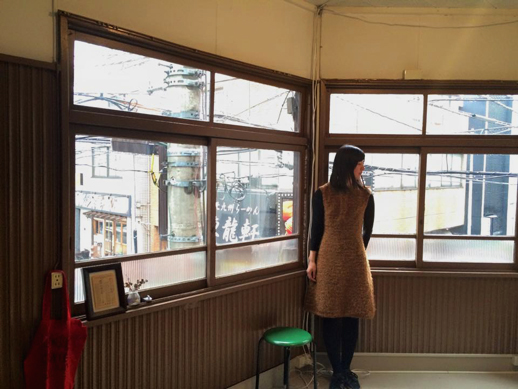
Emma Ota
Emma Ota



